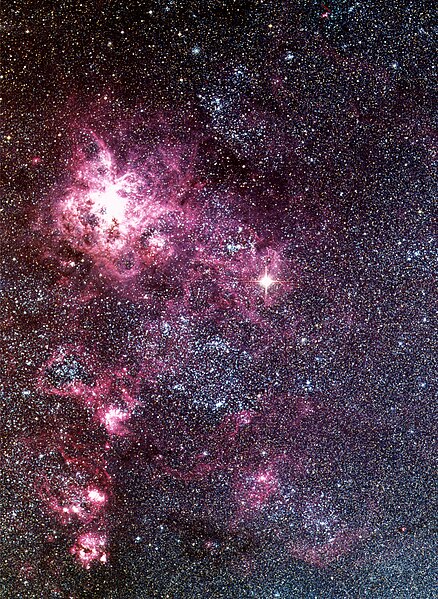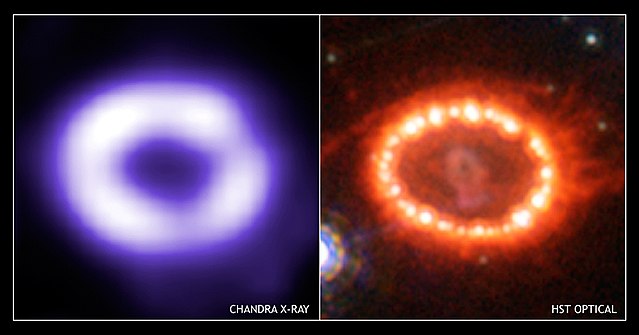SN 1987A was a type II supernova in the Large Magellanic Cloud, a dwarf satellite galaxy of the Milky Way. It occurred approximately 51.4 kiloparsecs from Earth and was the closest observed supernova since Kepler's Supernova in 1604. Light and neutrinos from the explosion reached Earth on February 23, 1987 and was designated "SN 1987A" as the first supernova discovered that year. Its brightness peaked in May of that year, with an apparent magnitude of about 3.
Supernova 1987A is the bright star at the centre of the image, near the Tarantula nebula.
The expanding ring-shaped remnant of SN 1987A and its interaction with its surroundings, seen in X-ray and visible light.
The remnant of SN 1987A
Composite of ALMA, Hubble and Chandra data, showing newly formed dust in the center of the remnant and the expanding shock wave.
A Type II supernova or SNII results from the rapid collapse and violent explosion of a massive star. A star must have at least eight times, but no more than 40 to 50 times, the mass of the Sun (M☉) to undergo this type of explosion. Type II supernovae are distinguished from other types of supernovae by the presence of hydrogen in their spectra. They are usually observed in the spiral arms of galaxies and in H II regions, but not in elliptical galaxies; those are generally composed of older, low-mass stars, with few of the young, very massive stars necessary to cause a supernova.
The expanding remnant of SN 1987A, a peculiar Type II supernova in the Large Magellanic Cloud. NASA image.





